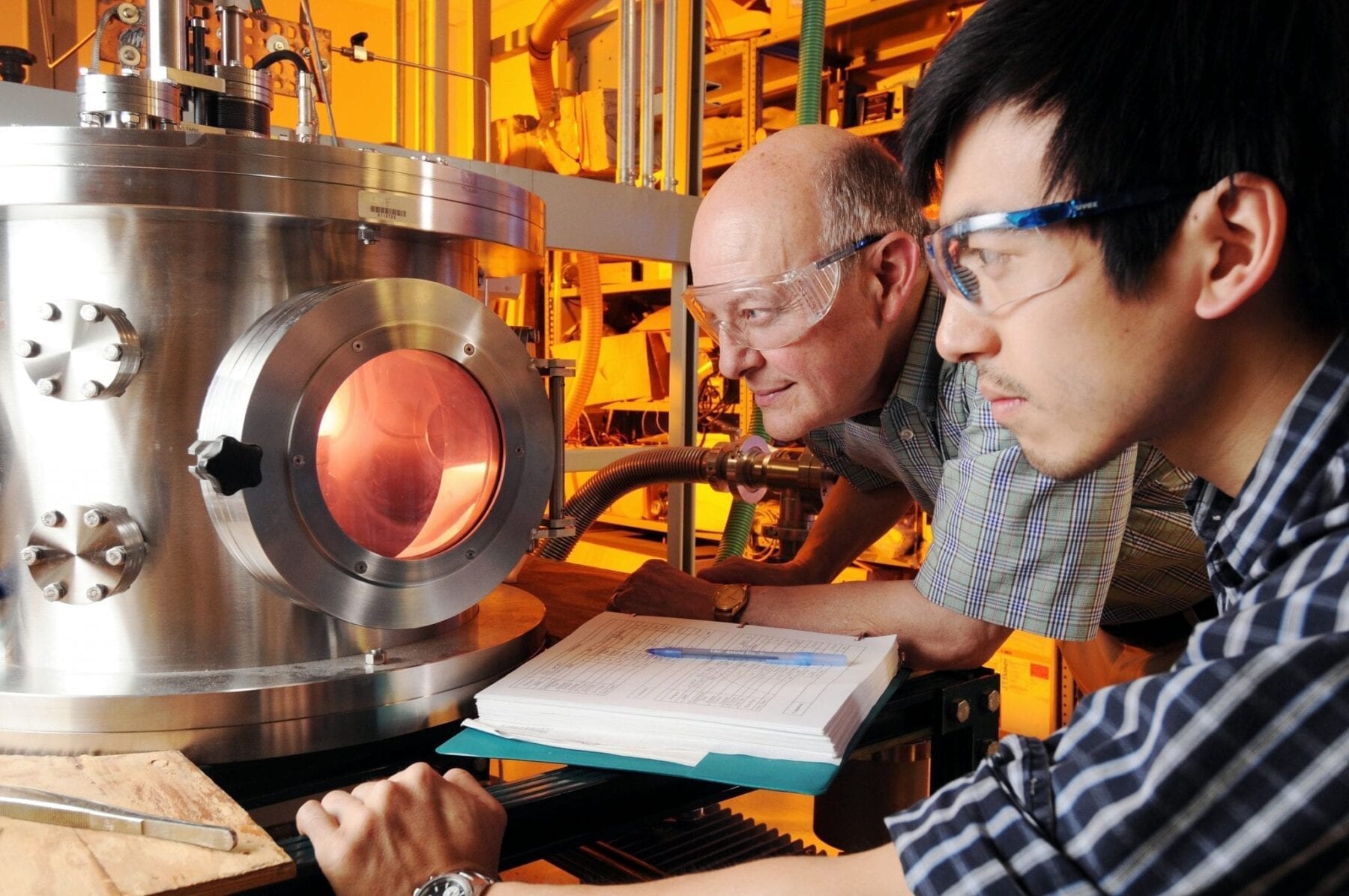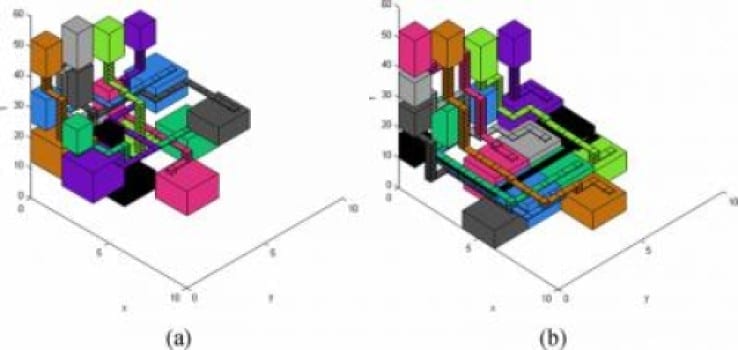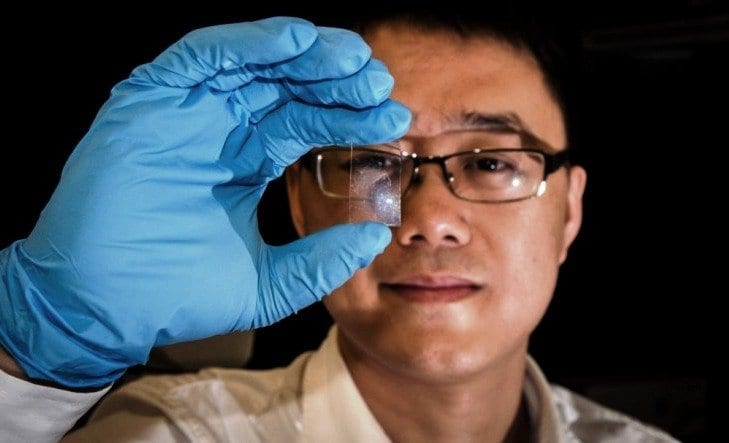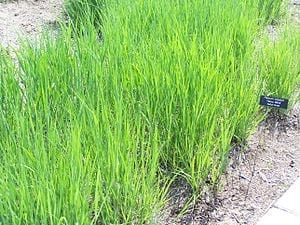
The modified paper could be used as the foundation for a new generation of inexpensive biomedical diagnostics
Paper is known for its ability to absorb liquids, making it ideal for products such as paper towels. But by modifying the underlying network of cellulose fibers, etching off surface “fluff” and applying a thin chemical coating, researchers have created a new type of paper that repels a wide variety of liquids – including water and oil.
The paper takes advantage of the so-called “lotus effect” – used by leaves of the lotus plant – to repel liquids through the creation of surface patterns at two different size scales and the application of a chemical coating. The material, developed at the Georgia Institute of Technology, uses nanometer- and micron-scale structures, plus a surface fluorocarbon, to turn old-fashioned paper into an advanced material.
The modified paper could be used as the foundation for a new generation of inexpensive biomedical diagnostics in which liquid samples would flow along patterns printed on the paper using special hydrophobic ink and an ordinary desktop printer. This paper could also provide an improved packaging material that would be less expensive than other oil- and water-repelling materials, while being both recyclable and sustainable.
“Paper is a very heterogeneous material composed of fibers with different sizes, different lengths and a non-circular cross-section,” said Dennis Hess, a professor in the Georgia Tech School of Chemical and Biomolecular Engineering. “We believe this is the first time that a superamphiphobic surface – one that repels all fluids – has been created on a flexible, traditional and heterogeneous material like paper.”
Research leading to development of the superamphiphobic paper has been supported by the Institute for Paper Science and Technology (IPST) at Georgia Tech. Details were published online May 24 in the journal ACS Applied Materials & Interfaces.
The new paper, which is both superhydrophobic (water-repelling) and super oleophobic (oil-repelling), can be made from standard softwood and hardwood fibers using a modified paper process. In addition to Hess, the research team included Lester Li, a graduate research assistant, and Victor Breedveld, an associate professor in the School of Chemical and Biomolecular Engineering
The Latest Bing News on:
Superamphiphobic paper
- Paper launched on post-indy justiceon April 26, 2024 at 2:32 am
THE Scottish government launched its latest Building a New Scotland paper, this time on post-independence justice. The paper is the 13th to be drafted by senior civil servants under the direction of ...
- Nippon Paper Industrieson April 25, 2024 at 5:00 pm
Nippon Paper Group, Inc. is a Japan-based holding company mainly engaged in the paper manufacturing business. The Company is active in four business segments. The Paper and Pulp segment ...
- Heroic firefighters rescue cat from Brownsville house fireon April 24, 2024 at 5:00 pm
Sign up for our Brooklyn Paper email newsletter to get news, updates, and local insights delivered straight to your inbox! A cat is onto its next of nine lives after ...
- Paper Mario: The Thousand-Year Door Preview - Treasuring Rediscoveryon April 24, 2024 at 5:00 pm
After several long years of waiting, Paper Mario: The Thousand Year Door is set to come back with a refreshing new look and new secrets to uncover. Indeed, the big reason as to why Paper Mario ...
- Paper Mario: The Thousand-Year Door remake is full of quality of life updateson April 24, 2024 at 5:00 pm
Nintendo GameCube classic Paper Mario: The Thousand-Year Door is getting a Nintendo Switch rerelease that’s somewhere between a remaster and a remake (not unlike the company’s recent Super ...
- Review: Astropad Rock Paper Pencil v2, the pen-on-paper iPad upgrade gets even betteron April 18, 2024 at 12:08 pm
Last year Astropad launched its impressive Rock Paper Pencil kit for iPad that delivers a reusable/removable matte screen protector plus a ballpoint-style Apple Pencil tip for a real pen-on-paper ...
- Pen To Paper: Kala Ghoda Festival 2024 - A Fusion Of Tradition, Innovation, And Inspirationon April 17, 2024 at 5:44 am
Pen To Paper: Kala Ghoda Festival 2024 - A Fusion Of Tradition, Innovation, And Inspiration 4d A nine- day fest bubbling with creativity and brewing with culture is all I have to say about the ...
- Brooklyn council member introduces slate of bills to protect tenants after residential fireson April 14, 2024 at 5:00 pm
Sign up for our Brooklyn Paper email newsletter to get news, updates, and local insights delivered straight to your inbox! When she first took office in January 2022 ...
- Lenovo Tab P12 Paper set to launch soonon April 11, 2024 at 5:00 pm
Here’s introducing the Lenovo Tab P12 Paper, a tablet that the company claims is specifically designed to allow for a glare-free reading and writing experience. The tablet, as Liliputing claimed ...
The Latest Google Headlines on:
Superamphiphobic paper
[google_news title=”” keyword=”superamphiphobic paper” num_posts=”10″ blurb_length=”0″ show_thumb=”left”]
The Latest Bing News on:
Biomedical diagnostics
- Exact Sciences (EXAS) Reports Q1 Loss, Tops Revenue Estimateson May 8, 2024 at 3:05 pm
Exact Sciences (EXAS) came out with a quarterly loss of $0.50 per share in line with the Zacks Consensus Estimate. This compares to loss of $0.42 per share a year ago. These figures are adjusted for ...
- University Lab Partners Selected to Lead the Next Generation of the BARDA Accelerator Network as the Medical Devices and Diagnostics Hubon May 7, 2024 at 5:59 am
has been chosen to lead the diagnostics and medical devices hub in the next generation of the BARDA Accelerator Network of the Biomedical Advanced Research and Development Authority (BARDA), part of ...
- Point of Care Diagnostics Market Report: Trends, Analysis, and $55.3 Billion Forecast by 2030on May 7, 2024 at 5:45 am
The global Point of Care Diagnostics Market witnessed significant growth in recent years, with a value of $29,478.63 million in 2020, expected to soar to $55,275.73 million by 2030, at a CAGR of 6.5% ...
- Biomedical Engineer Salaryon May 6, 2024 at 4:59 pm
How Much Does a Biomedical Engineer Make? Biomedical Engineers made a median salary of $99,550 in 2022. The best-paid 25% made $129,230 that year, while the lowest-paid 25% made $78,500.
- BARDA Launches Diagnostics, Medical Devices Acceleratoron May 6, 2024 at 12:15 pm
The hub will support the development of diagnostics and medical devices to detect, prevent, or respond to medical consequences that result from health security threats.
- Sea slugs inspire highly stretchable biomedical sensoron May 2, 2024 at 11:25 am
The revolution in personalized medicine is well underway—with wearable devices and DIY home testing, it's easier than ever to track everything from heart rate, to glucose levels, to microbiome ...
- Bruker Completes Acquisition of Molecular Diagnostics Innovator ELITechon May 2, 2024 at 4:00 am
Bruker Corporation (Nasdaq: BRKR) is pleased to announce the closing of its acquisition of ELITechGroup ("ELITech") for €870 million in cash, excluding the carved out ELITech clinical chemistry ...
- FDA Once Again Stands Athwart Biomedical Innovation, Yelling 'Stop!'on April 29, 2024 at 5:15 pm
Laboratory-developed tests can assess the risks of developing Alzheimer's disease or guide the treatment of breast cancer.
- Duke Biomedical Engineering chairman and OCT pioneer Joseph Izatt passes awayon April 29, 2024 at 6:56 am
Joseph Izatt was a skilled researcher and inventor who played a foundational role in the development of optical coherence tomography.
- Duke Researcher Dr. Amanda Randles Wins ACM Prize in Computing for Medical Diagnosticson April 25, 2024 at 11:31 am
The Association for Computing Machinery, named Amanda Randles of Duke University the recipient of the ACM Prize in Computing for groundbreaking contributions to computational health through innovative ...
The Latest Google Headlines on:
Biomedical diagnostics
[google_news title=”” keyword=”biomedical diagnostics” num_posts=”10″ blurb_length=”0″ show_thumb=”left”]










